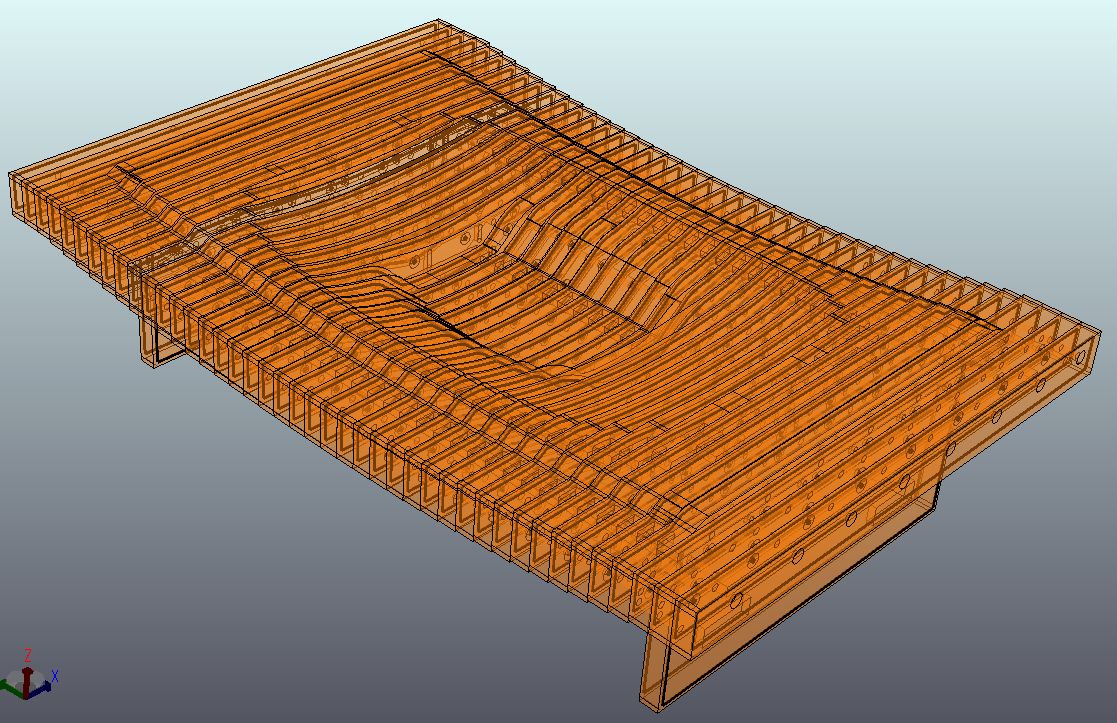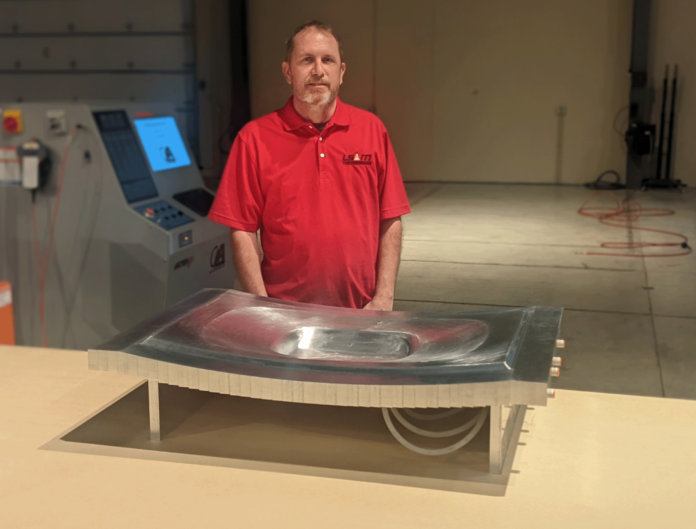Machine manufacturer Thermwood continues to give users the ability to produce parts with the benefits of the additive process using materials one cannot print or that are difficult to print. One of the AM materials that remains difficult to print right now is aluminum. As explained in the September/October edition of 3D ADEPT Mag (pp 30-33), the processing of these materials has long been associated with conventional manufacturing processes such as casting, sheet metal forming or machining.
Thanks to its recently developed Cut Layer Additive, Thermwood demonstrates a new way of processing aluminum, by manufacturing large metal molds at a very low cost.
As a reminder, Thermwood’s Cut Layer Additive (CLA) is an additive process that does not 3D print. We’ve had a closer look at the process in our latest 3D ADEPT Mag (pp 40-42). The machine cuts out each layer of the build, separating the layers into different segments to allow for optimized nesting on the sheet the parts are being cut from. The segments then fit together with puzzle joints to form each layer of the build, which is typically put together by hand, using dowel alignment holes for faster assembly.
 The manufacturing of an aluminum mold using CLA
The manufacturing of an aluminum mold using CLA
Large molds, for plastics processes, such as thermoforming, blow molding, rotational molding and reaction injection molding are commonly made of aluminum. A key element of such components is the mold face, essentially the cavity that defines the size and shape of the part.
Depending on the process, other functions may also be needed, such as vacuum, venting and/or temperature control. Adding these functions usually increases complexity and cost, sometimes significantly, Thermwood explains.
Thermwood’s CLA has enabled design flexibility, and has been able to deliver a complex part with new functions.
As far as functions are concerned, the new mold face – that is only a couple inches thick – integrates the aforementioned functions. The mold face encompasses the complete mold, along with all necessary functions.
“It’s simple and less expensive. Cut Layer Additive makes it possible. In this process, the mold face is built using machined aluminum layers, stacked and permanently attached. Since, prior to assembly, each layer is machined individually in a nest, it is possible to include holes or slots so that, when assembled, they match up, creating internal channels or chambers. These void areas in the mold are then accessed by boring holes from underneath into the opening,” Thermwood states.
To ensure design flexibility but also to enable all required functions to be included in a relatively thin mold face, it was important to use a channel with access holes at both ends to circulate temperature-controlled liquid for mold temperature control. The internal chamber, with small drilled holes, can be used for vacuum, similar to the process used in thermoforming molds. Thin slots between layers can be machined for vents if needed in specific processes.
The best part of this manufacturing process is probably the fact that it does not require programming. Thanks to machine intelligence, the operator just needs to send a CAD file to the machine and answers a few questions about how they want it to be made. Those questions can therefore be related to material, thickness, channels, standoffs’ location and other details.

 Other advanced featured the CLA machine enables, include a multitude of channels or chambers inside the mold face.
Other advanced featured the CLA machine enables, include a multitude of channels or chambers inside the mold face.
“For example, you can circulate liquid at different temperatures through different parts of the mold, or you can create vacuum chambers under different areas of the mold and regulate the flow and timing of vacuum to those areas to aid in forming difficult parts. There are few, if any, restrictions as to the size or geometry of molds that can be produced using this approach. Although the basic idea is quite simple, there are a lot of details that must come together to make it all work. Programing all these details using traditional CAD would be difficult at best. The effort would likely make the whole approach impractical”, a press communication reads.
In his interview with 3D ADEPT Media, Thermwood’s CEO Ken Susnjara said he believes executing a simple idea with CLA could have a profound impact throughout the large-scale manufacturing world. The manufacturing of this metal mold is the first application that proves he is probably right. I can’t wait for the team to demonstrate how far they can go.
Remember, you can post free of charge job opportunities in the AM Industry on 3D ADEPT Media or look for a job via our job board. Make sure to follow us on our social networks and subscribe to our weekly newsletter : Facebook, Twitter, LinkedIn & Instagram ! If you want to be featured in the next issue of our digital magazine or if you hear a story that needs to be heard, make sure to send it to contact@3dadept.com



